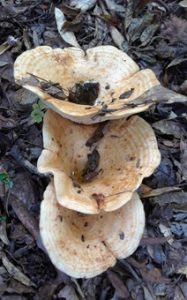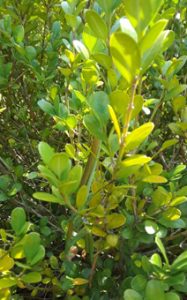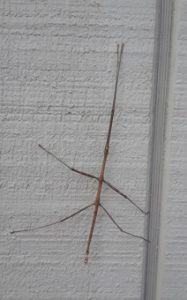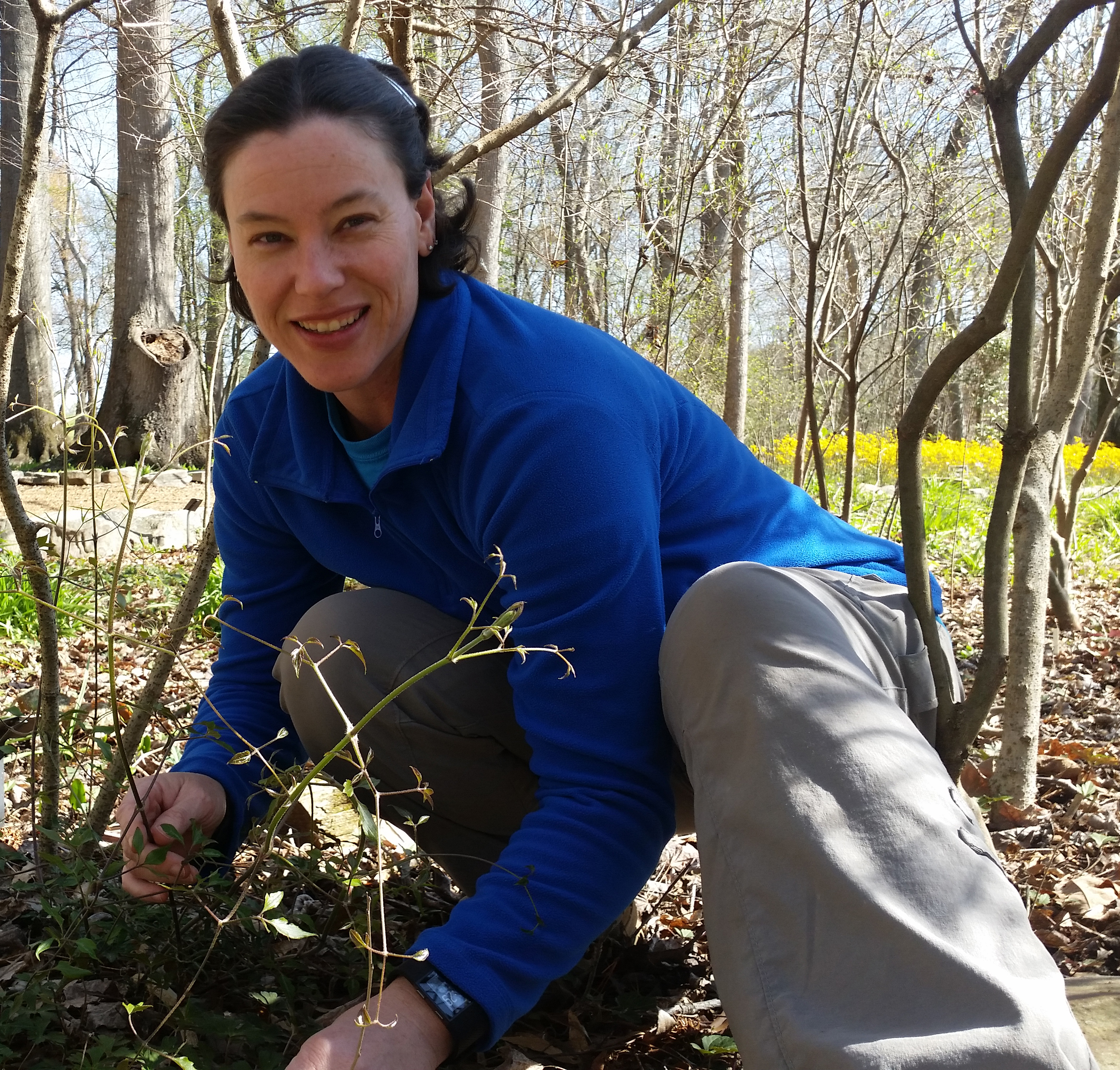September begins a transition period in the Garden, bringing hints of autumn while still displaying the bounty of late summer blooms. There are a multitude of native plants as well as robust introduced plants that shine this time of year.
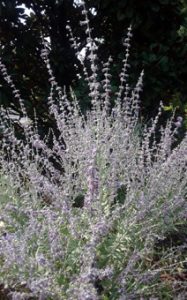 Russian Sage, Perovskia atriplicifolia (Located in the Green Lot Parking Garden)
Russian Sage, Perovskia atriplicifolia (Located in the Green Lot Parking Garden)
This member of the mint family is native to the Himalayas and western China. It is a woody-based perennial or subshrub and typically grows 2-4 feet tall, and features finely-dissected, aromatic gray-green leaves on stiff, upright, square stems with light blue flowers loved by many species of native bees. It blooms best in full sun, and tolerates drought and heat very well, with a long summer bloom period (July – Oct). The fragrant foliage makes it deer and rabbit resistant, too.
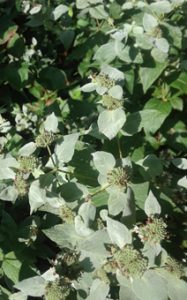 Pycnanthemum muticum, Blunt Mountain Mint (Located near the Railway Garden)
Pycnanthemum muticum, Blunt Mountain Mint (Located near the Railway Garden)
Pycnanthemum muticum, commonly called mountain mint or short-toothed mountain mint, is a clump-forming perennial that typically grows 1-3’ tall. It is native to Eastern North America where it typically grows in grassy open places, meadows, fields, low woodland areas and occasionally in dry upland woods. This densely leaved mountain mint features dark green aromatic leaves which have a strong spearmint-like aroma when crushed. In late summer, the dense flat-topped terminal flower clusters are held above showy leaf-like bracts located near the base of the cluster. The silvery pigmentation of the bracts gives the entire planting the appearance of being dusted by a white powder. Flowers are attractive to butterflies and bees. Native Americans used a mild tea made from this plant to treat fevers, colds, stomach aches, and other minor physical ailments.
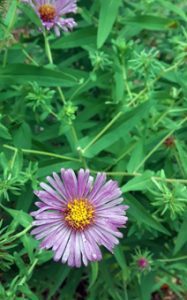 New England Aster, Symphyotrichum novae-angliae (Located in the Cottage Garden)
New England Aster, Symphyotrichum novae-angliae (Located in the Cottage Garden)
The New England Aster is a mounding herbaceous perennial that occurs in moist prairies, meadows, thickets, low valleys and stream banks. It has a wide distribution across eastern North America and sports shiny purple butterfly-attracting flowers in August and September. It likes evenly moist soil in full sun and may self-seed in optimal conditions, making it a good choice for naturalized areas of the garden. It tolerates clay soil very well, as long as it does not stay wet, and makes a good cut flower. Trimming the height by the first week of June will keep the plant compact without sacrificing flowering.
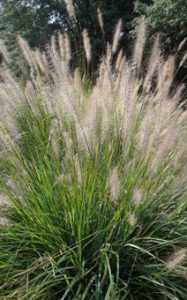 Pennisetum alopecuroides ‘Foxtrot’, Fountain Grass (Located in the Annual Garden)
Pennisetum alopecuroides ‘Foxtrot’, Fountain Grass (Located in the Annual Garden)
Pennisetum alopecuroides, commonly called fountain grass, is a warm season ornamental grass native to Eastern Asia and western Australia. It grows in graceful clumps up to 2-4 feet tall and wide and features narrow, graceful leaves in summer, fading to beige in late fall. Foliage and seed heads usually remain attractive throughout the winter. Showy, white-pink bottle brush-like flower spikes arch outward from the clump in late summer like water spraying from a fountain. Pennisetum alopecuroides ‘Foxtrot’ is an easy-to-grow, cold hardy ornamental grass with a vase shape of narrow green foliage that grows to 4 feet. It grows best in full sun and moist, well-drained soils. The genus name comes from the Latin penna meaning feather and seta meaning bristle in reference to the flowers having long, feathery bristles.
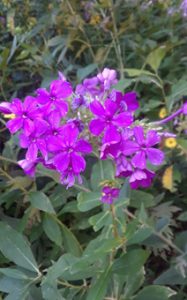 Phlox paniculata, Autumn Phlox (Located on the south end of the Mathews Nature Trail)
Phlox paniculata, Autumn Phlox (Located on the south end of the Mathews Nature Trail)
Phlox paniculata, commonly known as garden phlox or Autumn Phlox, is native from New York to Iowa south to Georgia, Mississippi and Arkansas. It has naturalized into areas beyond its original native range where it is typically found in moist or rich low woods, thickets, and alluvial banks. This is an upright perennial that grows in a clump to 2-4′ tall and to 2-3′ wide on stiff stems and holds a pyramidal cluster of fragrant, tubular, pink-purple to white florets over a long July to September bloom period. In cultivation, it performs best in full sun. Butterflies love the flowers.
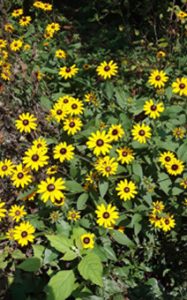 Rudbeckia fulgida, Black-eyed Susan (Located at the entrance to the Bush Azalea Trail)
Rudbeckia fulgida, Black-eyed Susan (Located at the entrance to the Bush Azalea Trail)
Rudbeckia fulgida is an Alabama native which occurs in both dry and moist soils in open woods, glades and thickets. It is an upright clump-forming perennial which typically grows to 3′ tall, often forming colonies in the wild. It features daisy-like flowers with yellow rays and brownish-purple center disks. It is easily grown in well-drained soils in full sun with good air circulation, although plants will tolerate some light shade. Prolific bloom production over a long mid-summer to fall bloom period makes it a good cut flower. The genus name honors Olof Rudbeck (1630-1702), a Swedish botanist and founder of the Uppsala Botanic Garden in Sweden where Carl Linnaeus was professor of botany.
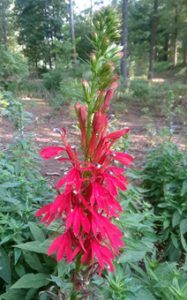 Lobelia cardinalis, Cardinal Flower (Located in the south end of the Bush Azalea Trail)
Lobelia cardinalis, Cardinal Flower (Located in the south end of the Bush Azalea Trail)
Lobelia cardinalis, commonly called cardinal flower is a native perennial which typically grows in moist locations along streams, springs, and riparian wooded areas. A clump-forming perennial which features erect, terminal spikes of large, cardinal red (or blue) flowers on leafed stalks. Typically of 2-3 foot high tubular flowers are 2-lipped, with the three lobes of the lower lip appearing more prominent than the two lobes of the upper lip giving it a distinct appearance. Flowers are very attractive to butterflies and hummingbirds in late summer. The genus name honors Matthias de l’Obel (1538-1616), a French physician and botanist, who co-authored Stirpium Adversaria Nova (1570) which detailed a new plant classification system based upon leaves.
If you look carefully…
You may also see a variety of other interesting sights in the Garden, such as fungi and insects.

